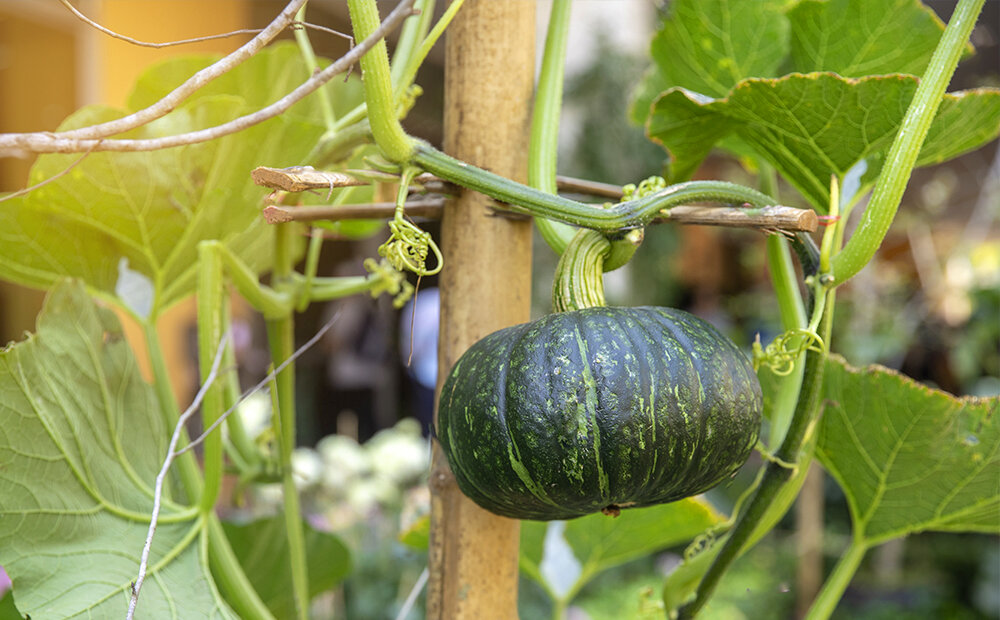VERTICAL VEGGIE GARDENING
If you’re short on garden beds or want to maximize your growing surfaces, vertical gardening can transform your landscape. Using trellises, archways, and poles to grow vine varieties can free up your garden for more vegetables below.
VERTICAL VINES
POLE BEANS
Before you reach for the bush bean, set up a trellis, and plant a pole variety. Like their low growing cousins, pole beans come in green, yellow, and purple. But rather than crowding out your spinach, they’ll quickly climb to taller heights and easily cling to any pole, netting, or wire.
PEAS
Another natural climber, pea vines can range from one foot in height to as tall as seven feet. You can find viney varieties of snow, shell and snap peas that will thrive on any type of sturdy trellis. Once the peas start producing, they’ll keep you busy with tender pods that can be harvested every one or two days.
CUCUMBERS
Both slicing and pickling cucumbers come in viney breeds. Training them to ascend trellises, mesh, or archways will multiply your harvest and encourage the hanging fruit to grow into straighter shapes. The breeze that blows through vertical cukes will also decrease their risk of powdery mildew.
WINTER SQUASH
You can set up small and medium-sized winter squash in your vertical garden. Most types grow in vines and will readily weave through a sturdy trellis, but make sure the holds are strong enough. If you fear the hanging fruit will break free of the vine, you can secure them in a sling of soft fabric while they grow.
INDETERMINATE TOMATOES
Indeterminate tomatoes, rather than the determinate (bush) variety, will grow into your vertical garden with a little help. Tying them to tall stakes as they grow can encourage them to reach heights upwards of six feet or more. The fresh air of higher elevations keeps the fruit disease-free and opens up the garden below for more crops. You can find them in large, medium, and small fruit varieties.
BEYOND THE VINE: THE VERTICAL HERB GARDEN
Living walls are another way to add a vertical dimension to your garden. One of the simplest techniques is to transform a fabric shoe organizer into a herb planter. This involves filling the pouches with potting soil and planting a herb in each pocket.
Keep in mind that the planter will be quite heavy after you add the soil, so make sure it’s fastened securely onto a strong fence or shed wall. Also, check the water flow through each pouch before you add the soil. If there is not ample drainage, poke a few holes into each pocket. Finally, leave about an inch of space between the top of the soil and fabric.
With these tips, your herbs will soon be drinking in the sunlight without using any ground in your garden.
Beyond the vine and vertical herb planter, you can also add hanging baskets to your landscape. With these three tools, your garden can open into new vertical horizons, and you’ll soon be growing food on all the surfaces of your yard. For plants, products, and other inquiries, please don’t hesitate to contact our garden center in Indianapolis to arrange curbside pickup. We’d be happy to help you maximize your growing space and serve you in any way we can.





